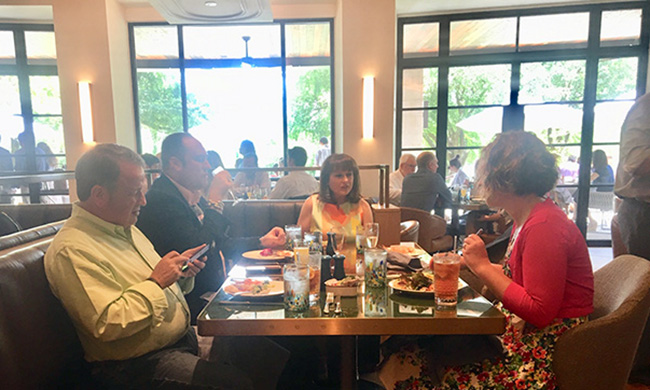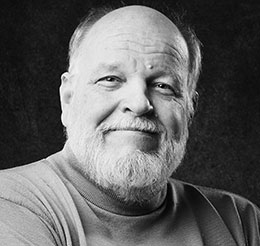The Best Operated Restaurants in Austin

Great food is not always an automatic given for making a restaurant successful. Restaurant customers expect friendly and attentive service and a minimum of minor annoyances, such as long lines or having to wait too long for the check. They also want to sense that their needs are understood and, most importantly, that they matter.
All of the above derive from from restaurants that are skillfully and efficiently operated. So, we’ve compiled a list of some of the Austin area restaurants that we feel have really figured out how to utilize competent operational techniques toward the betterment of customer experiences.
III Forks
This downtown steakhouse has an operational structure that is totally customer focused. From the general manager to the AGM, you won’t get through a meal where at least one won’t stop by to say hello and ask if there’s anything they can do to improve or enhance your dining experience. And unlike the managers at many chain restaurants who robotically walk from table to table asking (without really caring) if everything is OK, the managers at III Forks genuinely care and it shows.
The servers are well trained and completely tuned in to the needs of their tables. If a customer has a special need they are only too happy to fulfill it. The sommelier is very knowledgeable and will help you pair wines to your taste, yet he never intimidates customers with his encyclopedic knowledge of the best wines, as can sometimes be the case at higher end establishments.
Aside from terrific ribeyes and t-bones, III Forks works because the management team totally understands the art of pleasing people. And that’s why it’s one of our favorites!
Rudy’s Country Store and Bar-B-Q
There’s a reason this locally-owned powerhouse received the coveted Baldrige Award given to exceptionally well-operated businesses.
From the top on down, Rudy’s is all about the customer experience. They serve great BBQ and attract many fans. Yet unlike other Austin BBQ spots, they don’t have hour plus waits in line. The reason for this is the well trained counter staff. They are exceptionally friendly and handle orders expeditiously.
I don’t know what the average turnaround time from ordering to being served is, but I would imagine it’s fairly brief. And that’s the key. I have gone in on occasion to see a number of people in the store but the line always moves quickly. This is a pleasant relief in a town where long lines are often the rule, rather than the exception. The same is the case with their sister restaurants, Mighty Fine Burgers.
Chinatown
Whether you’re at the Westlake, Mopac, or downtown restaurants, Chinatown always provides courteous and very efficient service. Food orders come quickly as does the check, and if a particular dish takes a bit longer to prepare they’ll let you know.
Many of the servers are so popular they are known by one name: Sonny, Freddie, and Jimmy to name just a few. This speaks volumes about their relationships with customers.
And on top of it all is Ronald Cheng, the founder and a superior chef in his own right who continues to innovate new dishes to add to his already delicious array of Szechuan, Cantonese and Thai-influenced Chinese dishes.
Estancia Brazilian Steakhouse
This Brazilian Churrascaria in the Arboretum is a classic example of a hands-on operation.
The concept of “espeto comida” (continuous dining) puts great pressure on the servers (dressed as gauchos) to deliver the skewers of savory beef, lamb, chicken, and sausage to customers who have their green cards in the “up” position (meaning keep it coming). And keep it coming they do, with an infectious enthusiasm and timeliness. The enormous salad bar needs constant replenishing as well and I’ve never seen them fail to do this.
A restaurant like Estancia works not only because of the food but because the entire staff totally embraces the concept. This is immediately obvious to customers and creates confidence and lots of repeat business.
Jack Allen’s Kitchen
When Jack Gilmore, former exec chef at Z’Tejas, ventured into the restaurant wilderness in Oak Hill about ten years ago against the advice of those who thought they knew better, he brought his comfort food concept into s space that had housed a variety of failed restaurants.
But not long after he opened, to the astonishment of many pundits, he had something that the area had not seen in a long time: a wait on a Wednesday night! Since then, Jack and partner Tom have replicated the original concept in Round Rock, Westlake, and north Austin off Anderson Lane.
Why did – and does – it work so well? There’s a comfort to the atmosphere that extends far past the always approachable food. The servers are accommodating and there’s always a manager (with real authority to solve problems) nearby. They run a healthy to go business and when you call your order in, they’ll bring it out to your car when you arrive. Very good idea and quite popular. And also typical of how Jack and Tom approach their business.
The impression is that they can’t do enough for their patrons. And trust me, that resonates!
Café Blue
This charming restaurant has locations at the Galleria and downtown on 2nd Street. This place started as a small waterfront building on a cove off Lake Travis and moved into the Galleria where they took over the space of a former seafood restaurant. Then partners Pete Clark and Jason Landtroop with executive chef Ben Nathan worked on expanding the seafood menu and began by offering literally bushels of cold water oysters from Prince Edward Island and Cape Cod.
The idea was an immediate success and soon Ben rounded out the menu with an amazing bacon influenced creamy clam chowder, along with an authentic and really original Cubano sandwich, crispy coconut shrimp, and a plethora of excellent seafood dishes followed. The partners decided to do a Sunday brunch and reaching back to his New England roots, Ben introduced Maine Lobster Eggs Benedict. Great idea and terrific dish. I still order it every time we go.
The other reason that Café Blue works so well is the admirable synergy of the relationship between founder Pete Clark and his partners. Jason Landtroop was an excellent general manager with a terrific understanding of how to really please customers. So Pete offered him a partnership. Smart move. Ditto for Ben Nathan. Ben’s partnership insured a steady stream of creative energy for the restaurant and an opportunity to mentor new chefs. His influence is apparent in each new customer pleasing dish.
Pete is not a meddling, overpowering owner, as can sometimes be the case. He allows his partners to innovate and implement their own ideas. This is a recipe for success that has driven the progress of Café Blue. It could also be a blueprint for other restaurants to follow.
The above restaurants all work well because they understand the people pleasing fundamentals of the rigorous business of serving the public. Pick any one and see if you don’t agree!


